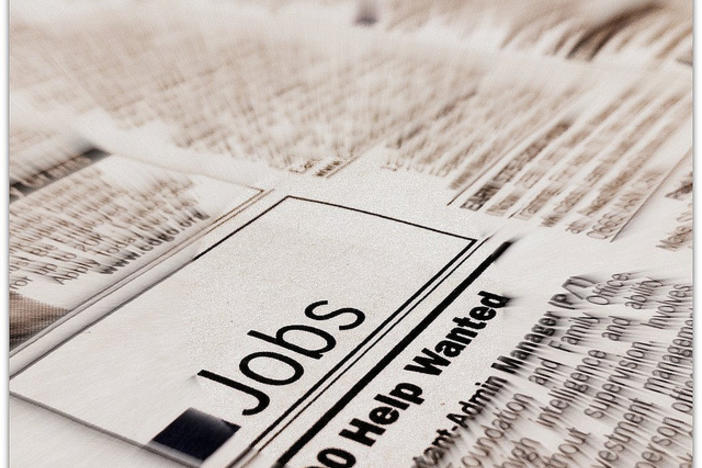
Section Branding
Header Content
Getting Others To Change: Start With A Compelling 'Why'
Primary Content

Getting others to change is no easy task. Whether we are talking about one person or a whole organization, if we want to increase the probability of successful change we have to start the right way. John Kotter, a Harvard Business School professor and the guru of change, recommends that any good change effort should start with a high level of urgency. In essence, what Kotter is suggesting is that we need to give a compelling “why” that will serve to overcome any resistance we may face. In this post, I’m going to offer to you some practical ways to craft the perfect “why” in order to lay the foundation for successful change.
A compelling “Why”
A good “why” or reason for change should have sound logic and a strong emotional tug. Getting people to change is akin to getting an addict to break from his or her addiction. You won’t get there with logic alone. You’ll need to throw in a healthy dose of emotion to get them feeling suitably uncomfortable. Many forms of emotion can work: sadness, fear, anger, worry, etc… However, there is one emotional lever that has the highest probability of success: anxiety. In essence, anxiety is urgency. Your goal is create a compelling why that leaves the person feeling so uncomfortable, so anxious, that they want to do “something” and they want to do that “something” right now. It’s at that moment that they are ready to hear your plan for action. So, how do we establish urgency? Consider the following two types of urgency.
Urgency Type 1: “You are going to die”
This form of urgency is equivalent to laying out a “worst case scenario.” It is extremely powerful in shaking people out of their patterns and forcing them to overcoming their fears. After all, what’s worse than some version of death? With this approach, your goal is to lay out a picture of impending doom. Perhaps that doom takes the form of the organization falling off of the proverbial cliff and ceasing to exist unless something is done soon. Or perhaps it takes the form of impending job loss if the individual doesn’t change. Or perhaps it paints a picture of the individual losing something else precious to him or her (family, friends, followers, etc…). Regardless of what you choose, this version of urgency entails that you hit them right between the eyes with quickly approaching storms. The trick to creating anxiety and heightened urgency utilizing this approach is to be sure to also attach a short time horizon. For example, I could say to you “you are going to die if you don’t change.” In response, you might say, “we’ll yeah, we are all going to die one day.” However, if I said to you, “you are going to die in 30 days if you don’t change now” all of a sudden, you are bit more interested in what I have to say.
Occasionally, I have to utilize this technique with clients. Consider “Tonya,” a client of mine several years ago. Tonya had taken on a big role that had tripled her work load, and she was not handling her new responsibilities well. She was yelling at her direct reports, she regularly locked herself in her office to avoid distractions and she wasn’t doing any of the actions I had prescribed her. She was failing miserably and things were coming to a head. At our next meeting, it finally came time to have the conversation. I said to her, “Tonya, it has come to my attention that if you don’t change, you are going to be fired in 30 days. Do you understand what I am saying? Repeat back to me what I just said so I know you know how serious this is.” Her eyes became as big as marbles as the gravity of the situation finally hit her. Change had begun.
One caution with this approach: too much doom and gloom can lead to paralysis. If you tip too far and put it on too thick, it can appear that the situation has gotten too out of control or it is simply too late to take it on. A little bit of this “hot sauce” goes a long way.
Urgency Type 2: “You can have everything you’ve always wanted…if you hurry”
This second type of urgency paints a vision of great things happening if we act now, but the longer we wait, the more likely it is that this perfect vision will slip through our fingers forever. You often see this approach used when organizations are trying to change their strategy or enter into a new market. Leaders will set out a vision of an untapped market that is a wonderful land of eager customers and high margins as far as the eye can see. But wait, competitors are starting to pay attention. The time is now to make the move. While this approach is a fantastic tool for leaders, you don’t have to be a leader of an organization to use it effectively. You could use the same approach to get another person to change their role or approach within the team in order to increase their value and importance. I utilize this same approach when I’m coaching young professionals that deeply want to make a career change but are afraid of the change required. I tell them, “my experience has been that if you make this change now, you can have the career you’ve always wanted. However, I’ve also noticed that by age 38, the window of opportunity slams shut. By that age you have family obligations, greater career responsibilities, a more defined career path, etc… Your clock is ticking so you better move now.” It reminds them that there are seasons for opportunity and sometimes you have to act in the face of fear if you truly want something.
Hit ‘em with everything you’ve got
The very best change agents are masters at combining both forms of urgency into one message to ensure the message sticks. Combining both urgency types is the equivalent of your doctor prescribing you a strong antibiotic as well as a steroid to ensure you knock out that nasty infection. So, consider packing an extra punch by combining both forms of urgency. Illustrate the impending doom if one does not change as well as the potential wonders that await him or her if they change right now. A powerful combination to be sure.
As a good mentor of mine would say, “Change is hard, what is the easiest way we can get there.” He couldn’t me more right. However, don’t confuse “easy” with “comfortable.” If you want to get others ready to take action, you’ve got to get the urgency rate as well as their level of discomfort high enough that they want to take action, but they just don’t know how. Anxiety and urgency are uncomfortable itches that we all desperately want to scratch when we feel them. Next up: how you bring a plan of action to scratch that itch.
Until then, consider this wonderful clip of Indiana Jones illustrating the power of establishing urgency. I don’t think I would want to stick my hand in there. Then again, we normally don’t have spikes flying at us at work…






